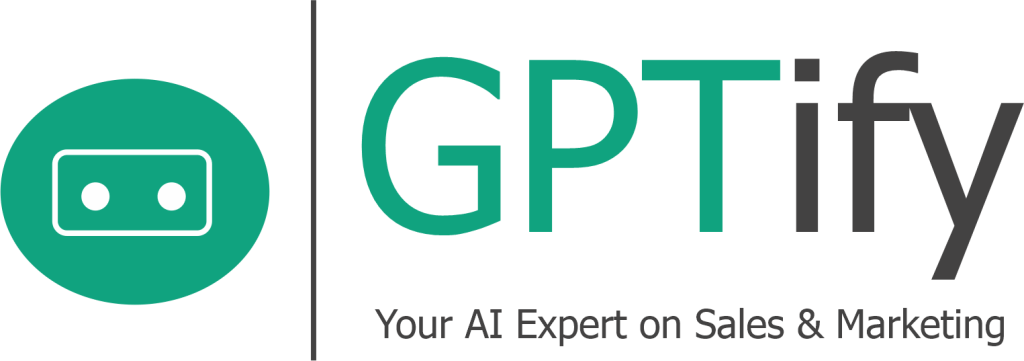Companies implementing AI in sales enablement see a 49% increase in revenue on average. This remarkable figure represents more than statistical interest—it showcases a transformation accessible to sales teams regardless of technical background. Throughout this statistical journey, you’ll discover how identifying AI needs framework can help assess your readiness for this revolution.
Our exploration covers five essential categories: adoption rates across industries, productivity enhancements, return on investment metrics, implementation challenges, and future trends. Each statistic serves as a stepping stone toward practical application, not merely data points for consideration.
The democratization of AI through no-code platforms has changed the equation. Sales professionals now harness sophisticated capabilities without coding expertise, turning statistical potential into tangible results. As a matter of fact, these numbers reflect opportunities waiting for activation through intuitive tools designed for rapid deployment.
This collection provides both validation for AI investment and a roadmap for sales transformation. Let these statistics guide your strategic decisions as we examine how accessible AI reshapes sales enablement fundamentals.
Why 87% of Sales Teams Are Racing to Adopt AI Right Now
We see sales organizations embracing AI as a competitive necessity, not just a tech novelty. According to Warmly, 70% of sales teams already use AI technologies. These adopters report average revenue increases between 6% and 10%. In fact, this surge in AI adoption in sales reflects both opportunity and urgency for our teams.
The momentum keeps building across industries. By the end of 2025, nearly 85% of enterprises will implement AI agents into their workflows. We’ve observed early adopters gaining significant advantages through enhanced efficiency. They also develop deeper customer insights and accelerate deal cycles. As a matter of fact, these benefits create a cycle where AI-powered teams outperform competitors.
Market growth statistics tell a compelling story about sales technology trends. Persana reports 61% of businesses see improved sales results after implementing AI. AI-powered tools will become standard for 75% of sales teams. This shift highlights how AI market growth transforms experimental tech into essential tools.
For many organizations, the question has evolved beyond “should we adopt AI?” Our research shows teams now ask “how quickly can we implement it effectively?” This transition brings practical challenges that require thoughtful navigation. Moving beyond AI hype requires understanding both potential and limitations in sales contexts.
The Hidden Costs Most Sales Teams Don't See Coming
Behind impressive adoption statistics lurk implementation realities many teams discover too late. Initial investment represents just the beginning of the AI journey. Organizations typically underestimate training requirements and integration complexity.
Realistic timelines for full AI deployment often extend 3-4 times longer than initially projected. Teams frequently encounter data quality issues and system compatibility challenges. User adoption hurdles also delay return on investment.
No-code AI platforms offer a cost-effective alternative by eliminating extensive development requirements. These solutions reduce implementation timelines from months to weeks. One mid-size retail company saved approximately $120,000 by choosing a no-code solution over custom development. In a way, sales leaders must consider total cost of ownership across the AI lifecycle, not just capabilities.
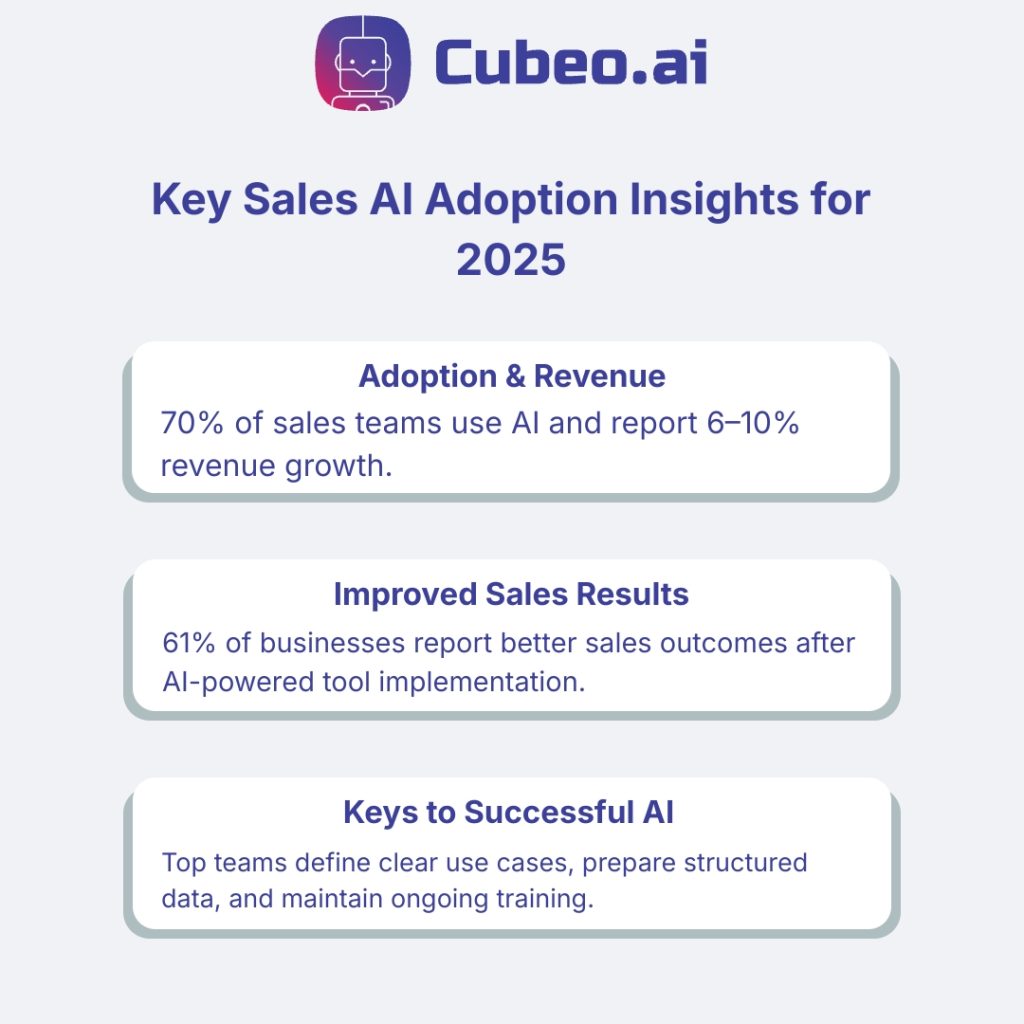
How AI Transforms Sales Productivity in Ways You Never Imagined
Sales professionals dedicate only 28% of their week to actual selling. The remaining time vanishes into administrative work, data entry, and preparation. AI tools dramatically rebalance this equation by automating routine tasks and amplifying human capabilities throughout the sales process.
The numbers tell a compelling story. Teams using AI automation spend 37% more time with customers and 61% less time on manual data entry. In fact, these efficiency gains directly boost revenue—companies using AI use cases in sales experience an average 27% increase in conversion rates through better lead qualification and personalization.
Content creation speeds up remarkably with AI assistance. Sales teams cut content creation time by 70% while maintaining quality. This acceleration allows more personalized outreach at scale, with systems generating customized proposals in minutes instead of hours.
Lead qualification becomes significantly faster with AI implementation. Organizations achieve 42% quicker qualification processes and 31% more accurate lead scoring. For sales teams, this means focusing energy on prospects more likely to convert while reducing wasted effort on unqualified leads.
Administrative burden reduction might be, in a way, the most appreciated benefit. Sales professionals save an average of 5 hours weekly on scheduling, follow-ups, and data entry— time redirected toward building relationships and strategic selling activities.
The 15-Minute Task That Now Takes 2 Minutes
Email personalization previously demanded extensive research and careful writing. AI systems now analyze prospect data and create personalized messages in under 2 minutes, reducing this task by 87% while maintaining response rates.
Research time decreases similarly. Gathering competitive intelligence once consumed 30+ minutes per prospect. AI tools compile this information in approximately 3 minutes, presenting actionable insights rather than raw data.
Proposal generation shows equally impressive gains. Creating customized proposals previously took 45-60 minutes. AI-powered systems now generate tailored proposals in 7-10 minutes by analyzing successful past documents and incorporating prospect-specific elements automatically.
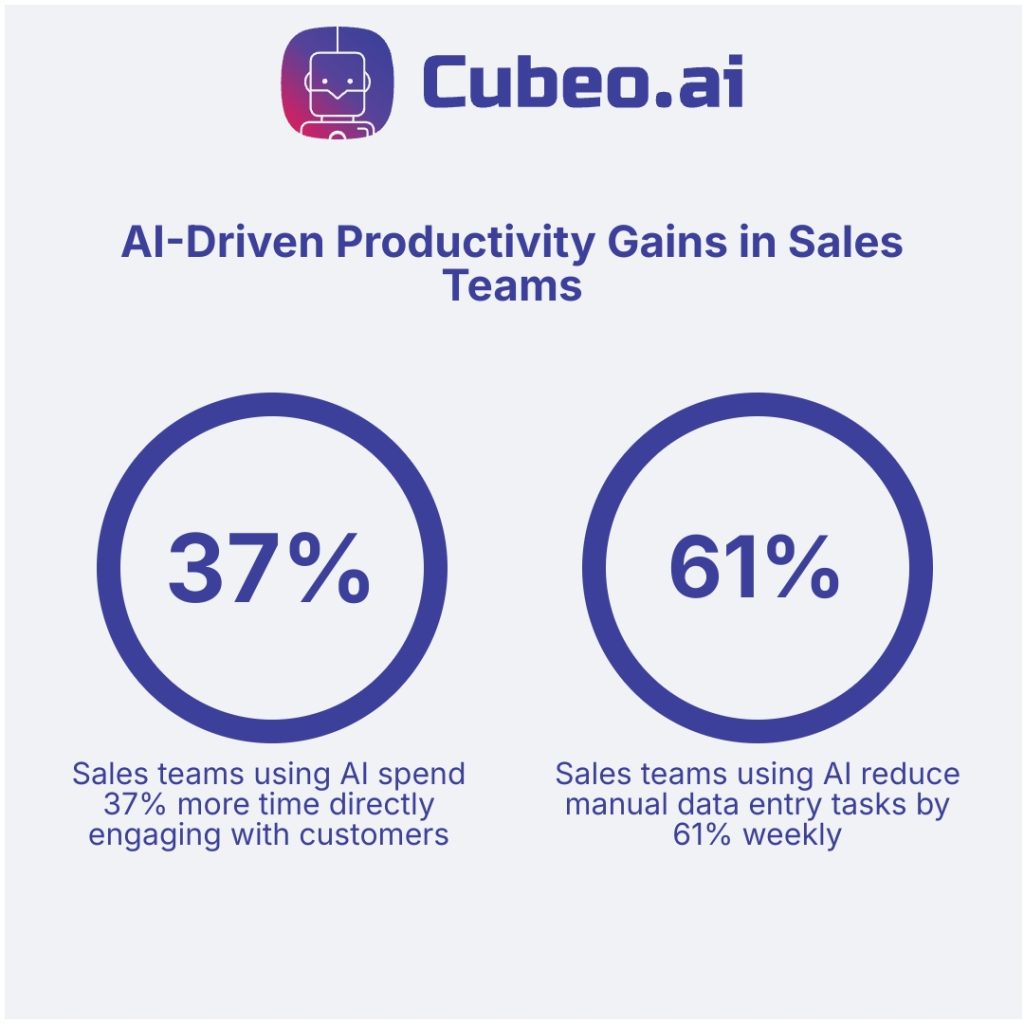
The Revenue Numbers That Will Make Your CFO Take Notice
Numbers speak volumes when presenting AI’s sales impact to financial leaders. CFOs respond to concrete ROI data—and current statistics demonstrate why AI deserves budget allocation.
Sales teams implementing AI tools achieve remarkable results across multiple revenue metrics. Companies report a 76% increase in win rates after adopting AI-powered sales processes. This boost stems from enhanced lead qualification and data-driven engagement strategies that convert more prospects into customers.
Deal velocity transforms dramatically too. Organizations experience 78% shorter deal cycles, moving opportunities through pipelines faster while maintaining relationship quality. This acceleration directly improves cash flow and resource allocation—benefits that resonate strongly with finance departments.
Average transaction value grows substantially with AI assistance. Sales professionals utilizing these tools generate a 70% increase in deal sizes through improved cross-selling and value articulation. AI identifies expansion opportunities human sellers might overlook and provides data-backed recommendations for maximizing account value.
The overall financial impact proves compelling. Recent studies show:
- 25% increase in sales revenue after AI implementation
- 79% of teams reporting improved profitability
- 32% boost in conversion rates from opportunity to closed business
- Contribution to a projected $15.7 trillion in AI-driven revenue by 2030
Historically, capturing these benefits required technical expertise. However, modern simplified AI assistant building platforms now make these capabilities accessible without specialized coding knowledge. No-code solutions enable sales teams to create custom AI tools aligned with specific processes, capturing ROI benefits without extensive technical investment or lengthy implementation timelines. In a way, this democratization brings enterprise-level AI advantages to organizations of all sizes.
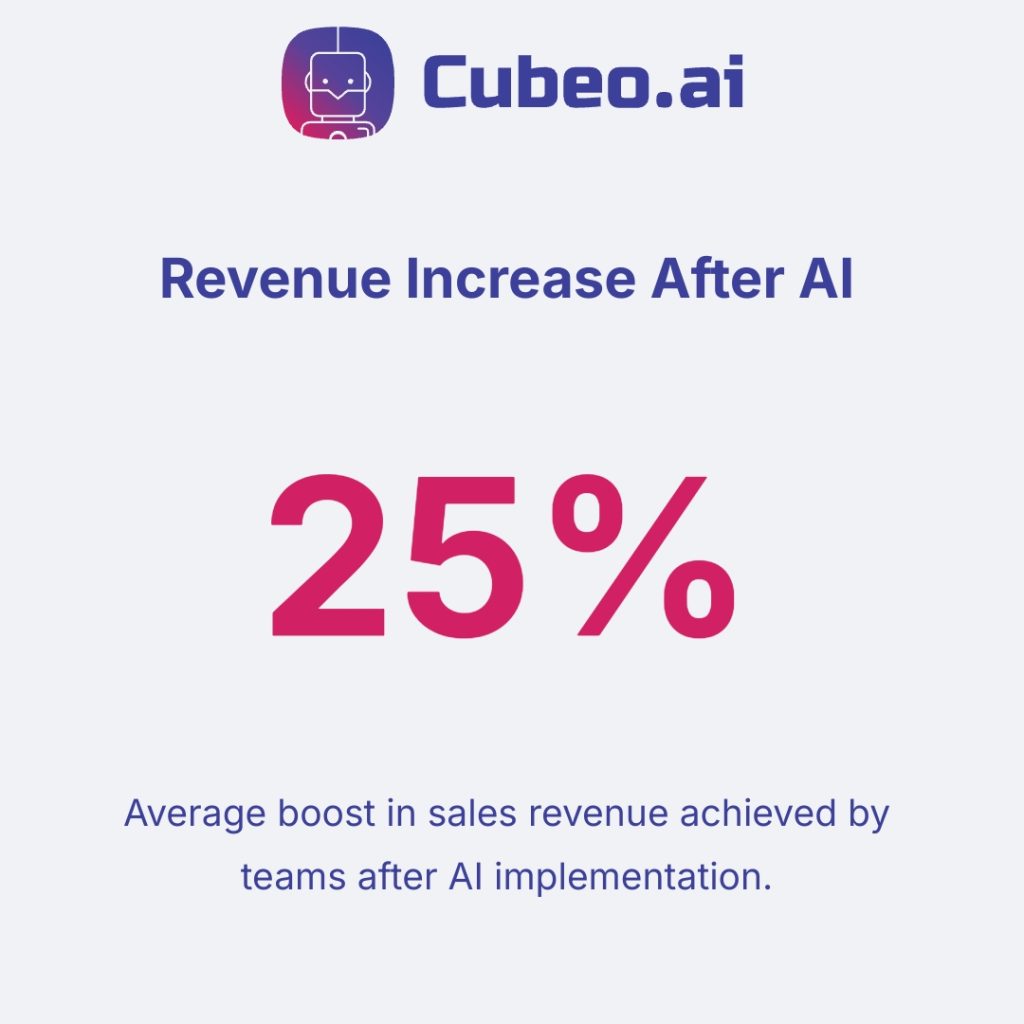
What 73% of Sales Leaders Wish They Knew Before Starting
Enthusiasm for AI often collides with implementation realities that catch sales leaders off guard. According to recent data, 73% of businesses experience efficiency gains from AI integration, yet most encounter significant hurdles during implementation. Knowing these challenges beforehand can substantially improve success rates.
Data quality stands as the foremost obstacle for sales teams. Many organizations discover too late that their existing data lacks consistency, completeness, or proper structure for AI systems. This revelation typically surfaces after initial investments, creating costly delays. Successful teams prioritize data preparation before selecting technology platforms.
Resistance to change persists as a major barrier despite positive outcomes. While 84% of sales professionals report AI boosting their sales, team adoption remains challenging. People naturally resist workflow changes, regardless of potential advantages. Effective implementations focus on user experience and gradual integration rather than complete process overhauls.
Technical complexity adds another layer of difficulty. AI adoption has grown from 20% in 2017 to 55% in 2023, yet many sales organizations lack necessary technical expertise. This gap becomes particularly evident when connecting AI with existing systems. Teams must consider various AI workflow challenges alongside potential benefits.
Industry patterns reveal valuable lessons. Finance (72%) and healthcare (90%) lead in implementation, partly due to clearer use cases and stronger data practices. Sales organizations can learn from these sectors, especially regarding compliance approaches.
Successful implementations share common elements: executive support, clear metrics, adequate training, and realistic timelines. Organizations viewing AI as a transformation journey rather than a technology purchase consistently achieve better results.
The Skills Gap That's Holding Everyone Back
Technical expertise requirements create a significant barrier to widespread AI adoption. Traditional implementation demands specialized knowledge in data science, programming, and systems integration—capabilities most sales teams simply don’t have in-house.
This skills gap explains why actual implementation lags behind interest, even though 75% of users want to leverage AI for task automation. Training existing staff rarely provides enough expertise for complex AI projects, while hiring specialists proves both expensive and time consuming.
No-code platforms transform this equation by removing technical barriers. These solutions allow sales professionals to build AI-powered workflows without coding knowledge, effectively democratizing access to capabilities previously limited to technical experts. For many teams, this approach offers the most practical path to capturing AI benefits without extensive technical investment.
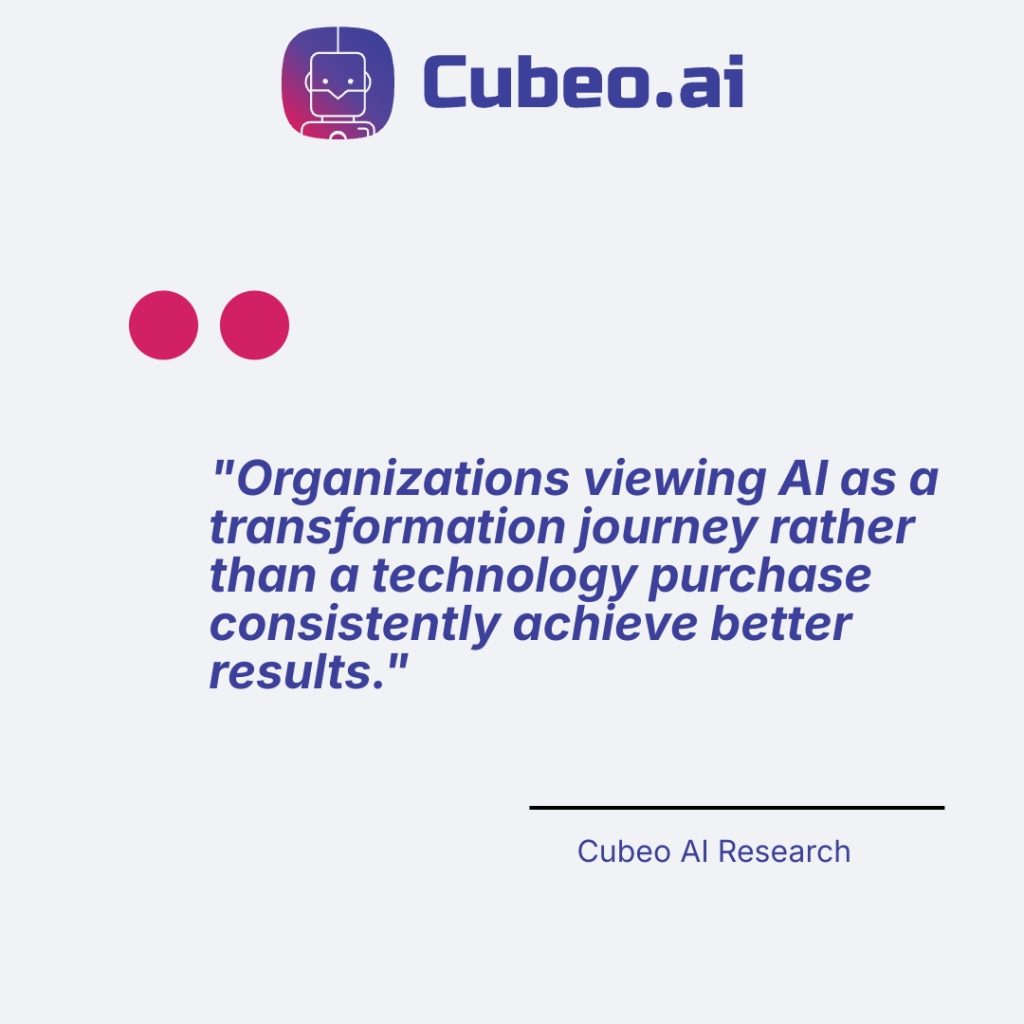
Your AI-Powered Sales Future Starts Now
Numbers tell a compelling story about AI’s impact on sales performance. Companies using AI technologies experience 76% higher win rates and 32% increased conversions, creating substantial market advantages. This shift happens quickly—73% of businesses already report efficiency gains from implementing AI solutions.
These statistics represent real opportunities available through no-code platforms right now. Sales teams can access powerful capabilities without technical knowledge or extensive development teams. By next year, approximately 75% of sales organizations will use AI powered tools, making adoption necessary to remain competitive.
Starting your AI journey requires neither huge investments nor technical expertise. Consider these practical first steps:
- Select one high-value use case—lead scoring or content personalization
- Measure results against clear benchmarks
- Expand based on proven success
The sales landscape belongs to teams combining human relationship skills with AI-powered efficiency. Sales professionals embracing these tools transform their capabilities across every stage. From prospecting to closing, AI-driven content creation amplifies results throughout the sales process.
Your competitors are moving forward. With 84% of sales professionals crediting AI for boosting results, waiting means falling behind. The question becomes how quickly you can capture AI benefits and transform your sales approach.
FAQ
What percentage of sales teams successfully implement AI and see measurable results?
Sales teams see measurable results when implementing AI, with reports of revenue increases up to 15%. Some also see ROI improvements between 10-20%. Implementing AI has shown impressive results, such as a 25% increase in sales conversions and a 30% reduction in sales cycles. Furthermore, 83% of sales teams using AI have experienced revenue growth this year.
How long does it typically take to see ROI from AI sales tools and platforms?
AI sales tools often show a return on investment within 6-18 months. Effective implementation and integration are key to productivity gains. These tools can save sales teams up to 4,000 hours each month. Shifting focus from tactical to strategic activities is also a benefit.
What is the biggest mistake companies make when implementing AI in sales enablement?
Companies often make mistakes when implementing AI, such as misalignment with sales strategy. Overloading teams with too many tools also causes confusion. Missed opportunities can occur due to outdated data. It is important to avoid these mistakes for successful AI implementation.
How does no-code AI compare to traditional AI implementation for sales teams?
No-code AI simplifies AI development for users without technical expertise. Traditional AI requires extensive coding knowledge. No-code AI speeds up implementation, while traditional AI offers more customization. Therefore, no-code AI is ideal for rapid deployment, and traditional AI is better for complex solutions.



